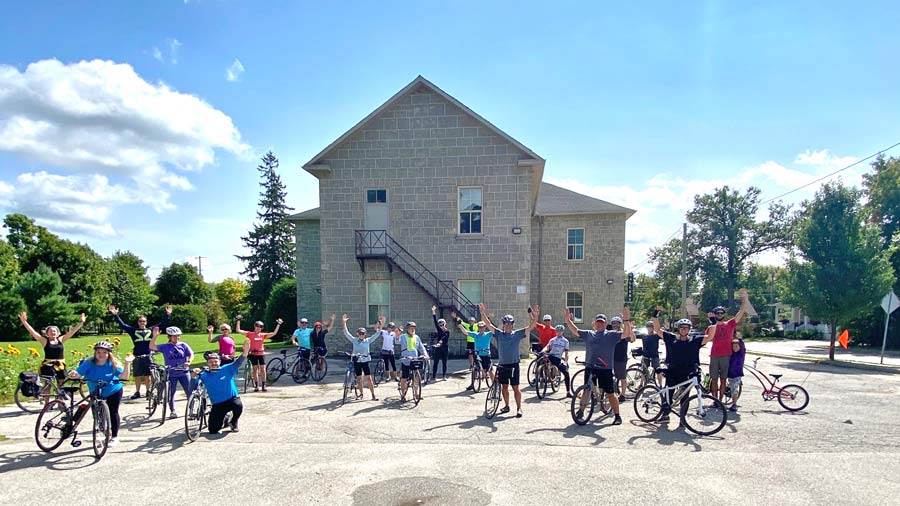FERGUS – John Scott hopes Centre Wellington council won’t get cold feet when it comes to bike lanes in the future after community backlash over council’s decision to install separated bike lanes on St. David Street North.
Scott, spokesperson for the active transportation advocacy group Green Lanes, said in a recent interview he recognizes bike lanes can be controversial but he’s “really impressed with the respectfulness” of the debate occurring online since council made its decision June 21.
Fergus resident Ed O’Shaughnessy started a petition in early July, collecting more than 900 signatures from people opposed to the bike lane option.
“My major worry is because of the backlash, council will hesitate on other decisions to make this complete,” Scott said.
Scott said bump-outs and painted lines are critical to the success of the bike lane plan on St. David Street North, facilitating pedestrian/bicycle crossing over the busy street—also Highway 6.
These are details in the design phase of the project that have not yet been approved, as council only approved the concept of adding bike lanes.
The township is planning to replace watermains and sewer mains on St. David Street North from St. Andrew Street to Edinburgh Avenue in 2023 and earlier in the year presented four options for putting the street back together when the work is complete: replace the surface as is; remove on-street parking lanes and increase boulevard and sidewalk width; keep on-street parking from St. Andrew Street to St. Patrick Street; and the separated cycling lanes option.
The infrastructure work on St. David Street North is expected to last 50 years, so this is an opportunity to begin a cycling network in Centre Wellington, Scott said, and perhaps the only opportunity to make changes on St. David Street North for decades.
The township invited public comment in a survey, “and I didn’t vote for the bike lane option,” Scott said, noting the option originally called for painted lanes.
“Painted lanes don’t work. But protected lanes do,” he said.
He said the first option – to return the road as it is now – was more of a default and not a serious option. It doesn’t fit with the township’s master transportation plan and its concept of providing complete streets for vehicles, cyclists and pedestrians.
Yet 41.6 per cent of respondents to the township’s survey preferred this option.
“I’m sure many people didn’t read the introduction to the project before they filled out the survey,” Scott said.
He added the thing that changed his mind about St. David Street was reading research that separated bike lanes reduce traffic accidents – not just bike vs. vehicle collisions but car vs. car as well.
With the bike lane option, road lanes are narrower, forcing vehicles to slow down. And they provide a buffer, whereas right now the road is tight against the sidewalk discouraging even pedestrians from walking on the sidewalk.
“Protected bike lanes make all people safer,” he said.
Scott said Green Lanes developed a master plan 13 years ago, “and we were thinking (of cycling) as recreation. But we want to connect the community,” he said. “Now it’s more about safety.”
He said people will cycle to work and school and shopping if there’s a safe way to do so. Combined with a climate crisis and a health crisis, the time is right to make dramatic and definitive changes to the cycling network, he said.
“We’re in a transportation revolution,” Scott said. “I don’t think we have time to be slow about this.”
Green Lanes would like to see cycling connections to trails, parks and schools and between downtown Fergus and Elora.
Some of that exists but there are many locations where a trail ends and a busy street begins.
He said Beatty Line, Gartshore Street, Provost Lane and many other streets are also good options for bike lanes but that does not negate the value of bike lanes on St. David Street North.
Bike lanes can also be used by electric bikes and electric scooters. With an aging population that might not always be able to drive a car, bike lanes benefit all ages, Scott said.
“Studies show that when you design cities around cars, people have no choice but to leave their homes as they age.
“But when you design for the bike, people will get rid of their cars and live independently in their homes,” he said.




